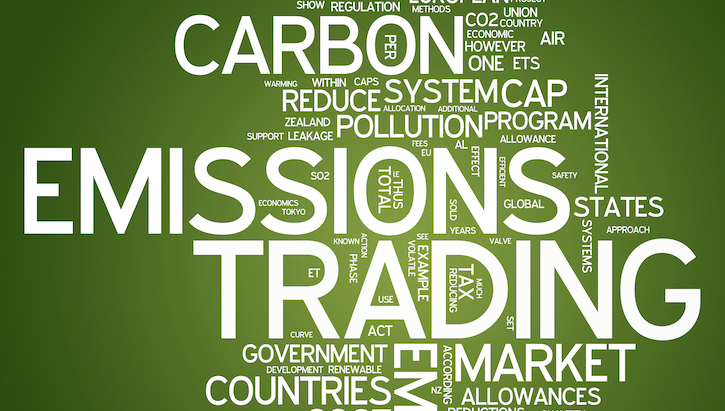
By Gracie Sun
China’s national carbon market development took an important step forward earlier this month with the release of the long-awaited “Interim Regulations on the Management of Carbon Emissions Trading – Draft” (Interim Regulations) by the Ministry of Ecology and Environment (MEE). It aims to clarify the structure of the exchange, the carbon verification process, the trading structure and enforcement, which are all essential parts of a fully functioning carbon exchange. The MEE is asking for public comment on these regulations by early May – a rather short turn around.
The Interim Regulations is the first official document on national carbon market development published by the MEE since China officially launched its national carbon market at the end of 2017. The release of the document is regarded as a positive signal as it demonstrates the commitment of the central government to finalize the development of a framework for the national carbon market by 2019, and to launch trading for the power sector on a trial basis.
As published in draft, the Interim Regulations have 27 articles and clearly defines the legislative intent, basic principles and division of duties for the actions of key emission entities, the process of allowances allocation, and the establishment of a carbon emission monitoring, reporting and verification (MRV) system. It also clarifies the liabilities of the key emission entities, verification agencies, key trading entities, and government authorities.
The highlights are in three main areas:
First, as the principal legislation of the national carbon market, the Interim Regulations serve as the high-level design for legislative regulation of national carbon market. It outlines the responsibilities and liabilities of government authorities and participating entities. Once the Interim Regulations is officially published, the key tasks of the national carbon market will be accelerated and the key infrastructural systems will soon be launched, specifically the MRV system, allowances allocation and management system, trading and offsetting system.
Second, the Interim Regulations show the central government’s scrutiny for national carbon market supervision. For example, it stipulates:
- The central government set up a mechanism for carbon emissions trading that would be responsible for joint research and coordination regarding important issues related to carbon emissions trading;
- The MEE take responsibility for proposing the types of greenhouse gas (GHGs), industrial sectors, and key emission entities to be included in the national carbon market, and submit a proposal to the State Council for approval before publishing;
- Local authorities take charge of proposing and approving a list of key emission entities in their locality, and then submit to the MEE for approval;
- The key emission entities choose a third-party verification agency from the list ratified by the MEE, and that verification expenses shall be covered by the central government’s budget and the key emission entities (the power companies initially) shall not be charged for verification;
- Local authorities to start to verify carbon emissions and emission allowances within 30 days upon receipt of the carbon emissions reports from verification agencies, and report to the MEE.
Third, the Interim Regulationsclearly defines policies for allowance settlement, carbon information disclosure, market coordination mechanism, and detailed penalty measures.
- Allowance Settlement—Extra allowances of an emission entity may be sold or kept for future use, while entities that are about to exceed their allowances will have to purchase extra allowances before December 31 of each year;
- Information disclosure—The MEE will regularly disclose information on carbon emissions trading, and provide annual updates of the allowance compliance of key emission entities;
- Market regulation—The MEE will establish market regulation systems to strengthen the risk management of carbon emissions trading and establish management measures such as price floor and ceiling, as well as allowance auctions to stabilize the carbon market;
- Penalty measures—Detailed penalty measures are specified for different types of participating entities and put into credit management system pursuant to the law. Any serious violation by any key emission entity shall be subject to a fine of 2-5 times the value of carbon emissions allowance based on the average market price of the same year.
In terms of timeline, public comment for the Interim Regulations will be due on May 2, and then the Ministry of Justice and the MEE will make amendments by the end of June. There is a possibility that there may be a second round of public comment after June. The finalized version of the “Interim Regulations on the Management of Carbon Emissions Trading” is expected to launch officially in the fourth quarter of this year.
Simultaneously, the MEE has sent the draft work plan of the national carbon market to local governments of pilot markets and members of the power sectors for their comments and opinions. The plan provides a clear roadmap of the national carbon market development with specific milestones, as well as a clear timeline for implementing relevant regulations, ahead of the finalized “Interim Regulations on the Management of Carbon Emissions Trading.”
When fully operational, China’s national carbon market will be the largest in the world and the world has been patiently waiting to see the first trades of the market since it was officially launched. Release of the Interim Regulations provided a small glimpse of the finish line, but with this look, it is apparent progress has been made and that the process continues. As China designs and develops the national carbon market this year, stay tuned for more updates in the second half of this year.



